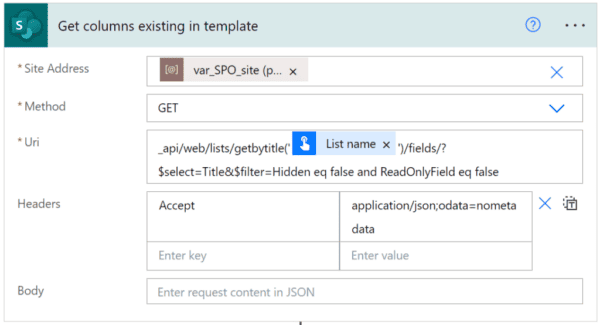Organizations aiming to implement workflows in SharePoint usually require to properly handle the forms part, whether with InfoPath, third party tool or one embedded into workflow solution (2 in 1). That’s the precise moment to figure out a strategy regarding forms. Once technology is chosen, it might be too late.
To customize?
Let’s be honest here. End users don’t care about workflow part. The only significant factor is whether it works properly or not. In case of forms – that’s a different story. This is the area which users interact with and in many cases, not the functionality, but the design and layout applied win hearts of end-users.
 So during the dilemma “to customize or not”, initial thought usually suggest: “customize”. Since user adoption in SharePoint is crucial, it makes perfect sense to deliver forms that are adjusted to corporate standards and users’ preferences. Usually companies start with one or two workflows to ensure quick win and move on with another ones. Customized forms can greatly help achieving that goal.
So during the dilemma “to customize or not”, initial thought usually suggest: “customize”. Since user adoption in SharePoint is crucial, it makes perfect sense to deliver forms that are adjusted to corporate standards and users’ preferences. Usually companies start with one or two workflows to ensure quick win and move on with another ones. Customized forms can greatly help achieving that goal.
And if you have to implement just several workflows (and forms) that’s a perfect way to go, regardless if you’re using custom .NET code, CSS, JavaScript or any other. But once several workflows combined with forms and successfully implemented, that’s usually just a beginning of the journey. There will be demand for more. What then? Customize all forms?
.NET coding requires deep knowledge and highly qualified staff. CSS and JavaScript – that’s an option, but also time consuming and requiring certain skillset. Please note that I’m only focusing here just on the design part, aside of any technology that’s available. Usually also things like validations and other things related to how form behave also have to be taken into consideration.
More importantly, there’s an issue with maintenance. Sooner or later a need to introduce modifications into existing forms will emerge. Then someone will have to be responsible for digging into the custom code (whether it’s .NET or any other) and change it. Not very easy, especially if author of customizations no longer works in the organization.
What about a migration to newer version of SharePoint? Will customized forms be compatible? There’s a high chance they will not, and all work will have to be done once again.
Or not to customize?
 The alternative is not to customize of how forms look like. On one hand, that means no problem with coding, maintenance, compatibility, etc. It’s a simple approach – make forms, make them functional and make users deal with it whether the solution is pretty or not (rather not…). It’s good when you need to deliver fast and there are no specific requirements regarding the design.
The alternative is not to customize of how forms look like. On one hand, that means no problem with coding, maintenance, compatibility, etc. It’s a simple approach – make forms, make them functional and make users deal with it whether the solution is pretty or not (rather not…). It’s good when you need to deliver fast and there are no specific requirements regarding the design.
On the other hand you’re risking low adoption level, users exploring workarounds and non-formal ways to handle things (emails, paper, etc.). Even excellent workflow or Business Process Management solution working underneath won’t help, if forms are crude and ugly. People simply will not want to use it.
That is the question.
So is there any alternative? Can forms be customized and not using custom code for styling at the same time? What if also advanced functionality of the form is crucial?
Let me give you a quick glance on our (the company I work for) approach to forms:
1. Save the time – inherit what you can.
Many people say the best way of work in a corporation is to delegate. We say the best way to work with forms is to inherit. In both cases you minimize your own workload and still can achieve desirable outcome.
Everyone knows user adoption in SharePoint is crucial, hence the huge focus on how forms look. Optimally, they should match styling applied to other SharePoint sites. So why not inherit that styling and apply to forms?
Don’t spend a minute on layout, let system take care of it and then…
As important as it is, styling on the forms is just an addition to the core functionality of a form. Since business simply cannot wait months to have a solution delivered, we decided to use unified structure of the form. It always has 3 columns:
• left always displays basic information generated by the system – since forms are tightly connected with forms, it contains information on: state of a workflow, person responsible for a task, etc.
• middle column for metadata;
• right column for instructions, attachments, comments and also for metadata.
Maybe that’s not very flexible, but at the same time allows to focus on what’s important – delivering forms that can be used right away.
3. Bigger picture is what you should always have in mind
Having one, default structure, results in high user adoption of every newly implemented form. Once user get acquainted with forms design, they know what to expect in each every other one. Forms will be consistent regardless of circumstances.
Additionally, unified structure ensures no problems with migration, e.g. to newer version of SharePoint or software itself. Of course there will always be some differences in details, like types of fields used, their order, etc. between various forms, but they have zero impact on migration since configuration of forms is actually kept outside of SharePoint. Having smooth migration can save dozens of man-hours. Especially if you’re using dozens of forms.
Think about priorities.
 Of course no solution can satisfy all requirements, especially those being on the opposite sides of the coin. But that’s a moment to ask yourself what is the priority:
Of course no solution can satisfy all requirements, especially those being on the opposite sides of the coin. But that’s a moment to ask yourself what is the priority:
• full customization or easy implementation?
• one quick win or series of successful projects in the long run?
• Temporary needs or maintenance and further development?
Our goal was to:
– To enable to build forms as fast as possible and at the same time have them being consistent with SharePoint styling
– Make sure once users get acquainted with one form, each and every other will be a piece of cake
– Not waste any time on migration
What are your priorities?
Contact me at michal.rykiert@webcon.com and share your experience with forms and workflows for SharePoint.
About the author:
 WEBCON produces comprehensive BPM system for Microsoft SharePoint, called the WEBCON Business Process Suite. The product distinguishes itself on the market by presenting innovative technological and business concept. Due to its unique workflow engine and capabilities which far exceed those offered by the SharePoint standard. WEBCON BPS enables efficient handling of the most complex workflows for thousands of users and millions of documents.
WEBCON produces comprehensive BPM system for Microsoft SharePoint, called the WEBCON Business Process Suite. The product distinguishes itself on the market by presenting innovative technological and business concept. Due to its unique workflow engine and capabilities which far exceed those offered by the SharePoint standard. WEBCON BPS enables efficient handling of the most complex workflows for thousands of users and millions of documents.
The system offers a multilingual, user friendly and intuitive SharePoint based interface with dedicated mobile access to tasks and documents. It’s graphic process designer helps users configure and draw even the most complex business process scenarios. At the same time enables simple creation of forms and workflow steps and paths. For more information visit: www.webcon.com
Check out the 2016 European SharePoint Conference video:












